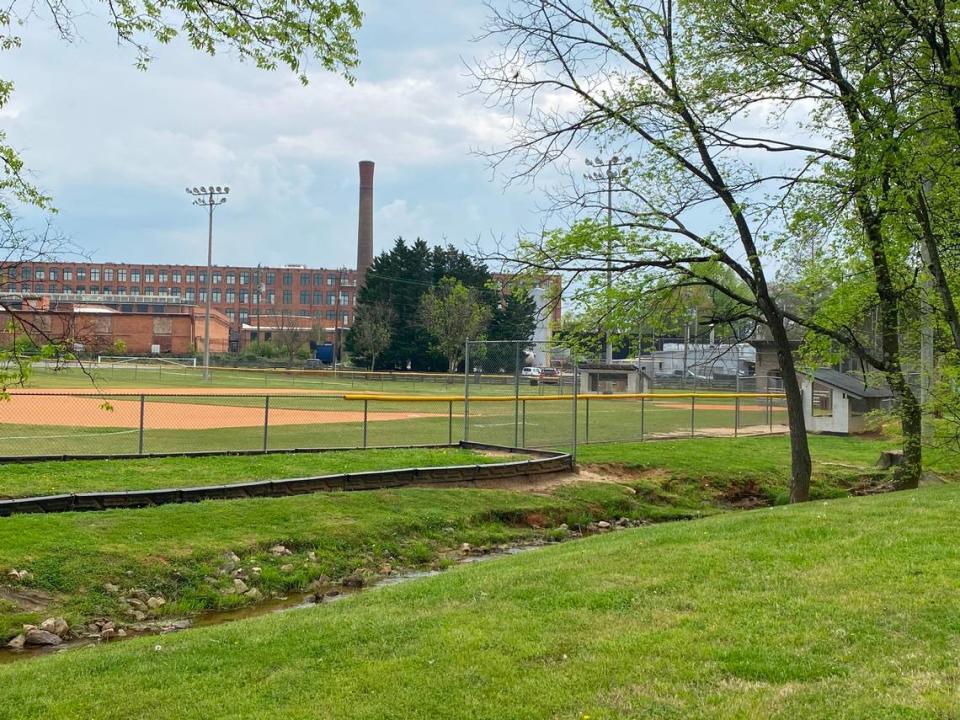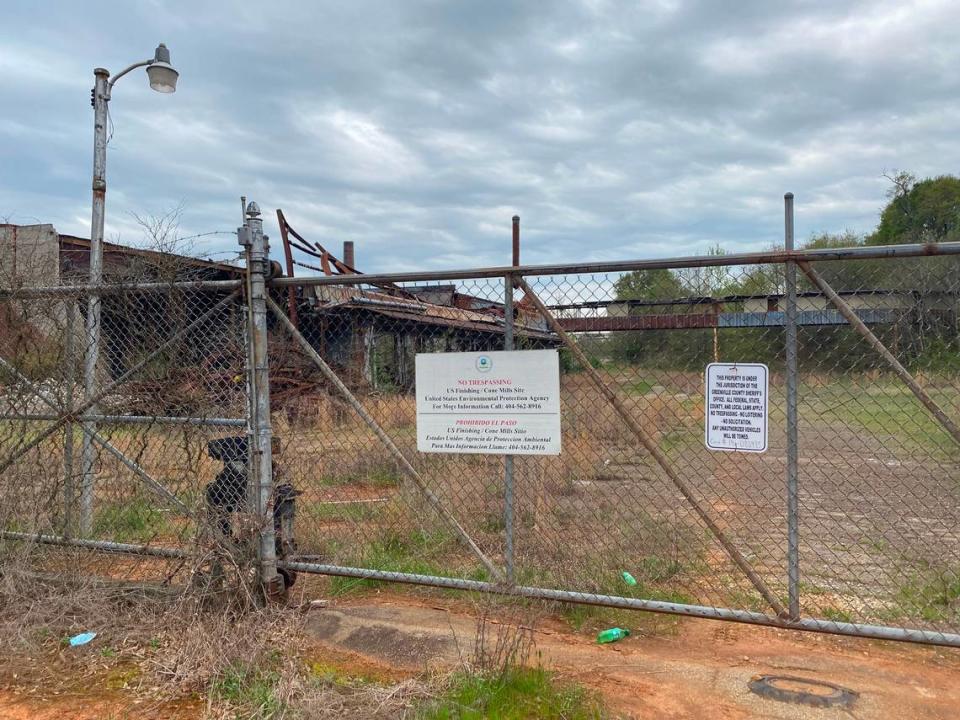Textile mills were Greenville’s building blocks. Their new lives show city’s evolution
First there was Camperdown. Then Huguenot and Mills and 15 others spinning cotton and bleaching fabric for the better part of the 1900s.
The mills formed a crescent shape around downtown Greenville, not one farther than 3 miles from Main Street.
In the glory times, the mills sustained thousands of families and provided them with churches, gymnasiums and baseball fields.
Then, as textile manufacturing moved to other countries, those noisy, hulking, lint-filled buildings grew silent. For decades, many remained empty, used only by the homeless, adventurous kids and all manner of termites and other pests.
But new life has come to most of them in a transformation that reflects Greenville’s own redevelopment. With more and more people wanting to live near the revitalized downtown, six of the remaining 14 mills either are or soon will be converted to residential lofts.
“They are full all the time,” said Don Koonce, a historian who made a documentary on Greenville’s mills called “Building an Empire: The Textile Center of the World.”
Greenville’s newest mill conversion
Ken Betsch, a Greenville architect who designed the Lofts at Woodside Mill, said the draw for tenants living in this old mills is its abundant natural light, open space and brick walls.
“It looks much like it did when it was an operating mill,” he said. “It’s a completely different feel.”
Woodside is Greenville’s newest loft apartment complex and includes amenities such as a pool and pavilion, club room, co-working space, fitness center, a yoga and boxing room and a pet spa. People are moving into one half of the building now; the other half will be completed in May. Rents range from about $1,300 to more than $2,600.
Woodside, built in 1902, was once the largest cotton mill under one roof in the world. It was owned by the four Woodside brothers, who were so successful they ultimately owned mills in five other cities, owned four banks and built the Poinsett Hotel, which remains a landmark in downtown Greenville.
They also built the upscale Ocean Forest Hotel in 1928, a 10-story resort in a time of beach cottages, before Myrtle Beach became a place of high-rises and a destination for the nation. The brothers lost everything in the stock market crash the next year.
Betsch said little was left inside Woodside Mill by the time the owners took over after a nearly 15-year vacancy.
“No artifacts,” he said. “That’s strange isn’t it?”
He encountered a number of oddities such as loading docks added in random places and different ceiling heights from one part of the building to the next. Additions were made through the years and didn’t always complement one another.
Huge roof leaks had to be repaired, and columns that looked fine had been eaten by termites from the inside. Intact walls were found to be rotted underneath. In the end, because the floors were not uniform, a layer of concrete had to be applied and then new flooring installed.
The nearly $40 million project began in earnest in 2018. In all, 307 units were configured into the long rectangular building.
Judson will be next
Judson Mill is a complex of five buildings on 36 acres built in 1912 as an experimental factory to combine Japanese silk with short-staple cotton. In later years, workers combined rayon with short-staple cotton to make the first synthetic fabric, Koonce said. Milliken owned it next and experimented with man-made fibers.
Taft Family Ventures and Belmont Sayre, two North Carolina companies, are partners in its redevelopment. The first phase, expected to cost about $90 million, will include residential and commercial. By the time the project is complete, the company will have invested about $200 million, said Lee Shain, director of development for Judson Mill.
They expect to pre-lease apartments in Building 1 beginning May 1. Occupancy could come in the summer depending on how the pre-leasing goes, Shain said. Rents will average about $1,500 a month, in line with most of the other loft developments in Greenville.
Building 2 will house Feed & Seed, a nonprofit that connects farms to markets; along with a rock climbing gym and a country music venue. Building 4 will come next. The company has signed a lease with a brewery that is new to the area. Shain said he could not reveal its name yet. Other retail and restaurants are being considered for that building as well.
The developers are not sure how Building 3 and Building 5 will be used.
“We’re trying to fill some voids, hoping to offer a product unique to Greenville,” Shain said.
On the drawing board
American Spinning, built in 1901, made sheeting and ply yarns. It operated under various owners until 1990 and has been empty since.
Contour Co., a Michigan developer, bought the building in 2016 and intends to convert 360,000 square feet into loft apartments and 50,000 into retail. Construction is under way.

Contour also bought the 11 acres where Poe Mill once stood. Poe was among Greenville’s first mills and made cotton and print cloth as well as sheeting. It was closed in 1977 and burned down in 2003 from campfires set inside by homeless people, Koonce said.
An outdoor skateboard park was built on what remained of the concrete floor, and the remaining property is vacant except for the smokestacks.
Contour plans to build six apartment buildings at the old Poe site containing a total of 482 units. A Contour spokesperson could not be reached for an update on either project.
Past developments and other uses
Mills Mill was the first residential conversion in Greenville. It was used for a number of functions before it settled on its most lucrative — condominiums. Koonce said it is the only condo project among the mill lofts because tax law was changed after it was built, making such projects undesirable.
Mills Mill was built in 1895 to make fine twills. During World War II, the mill produced herringbone fabric for Marine uniforms, Koonce said. The mill closed in 1978.
The Loft Condominiums were built there in 2003.
Other Greenville mill conversions include Mongahan and Brandon.
Monaghan is now the Lofts of Greenville, with a feature no others have: It’s connected to the popular 22-mile Prisma Health Swamp Rabbit Trail along the Reedy River, on an old railroad corridor and through city parks.
Monaghan has 190 units and opened in 2006. Besides the usual amenity of a pool, it includes a community garden, dog park and a stocked pond.
Brandon is most famous for being the mill where Shoeless Joe Jackson worked and began his baseball career in the Textile League.

Now called the West Village Lofts, it is a 182-unit complex with a theater, car wash station, game room and pet park in addition to other more usual amenities such as a pool and fire pits. It is next door to the Shoeless Joe Jackson park that includes a renovated version of the field he played on and the Greenville Center for Creative Arts, a visual arts gallery and education center.
In all, four Greenville mills were either torn down or burned down. Camperdown, on the bank of the Reedy River beside the now famous falls, was torn down, and an office building was built many years later on the site.
Union Bleachery closed after fire destroyed most of the mill and has since been designated a Superfund site by the Environmental Protection Agency due to the toxic chemicals disposed there for years. A piece of the property outside the Superfund site has been proposed for a townhouse-retail project.

Four mills remain in use for manufacturing by two house packaging companies. One is home to a company that makes air bags and fireproof material, and another is the site of a drapery manufacturer.
Others have been reconfigured for office use, such as Hugeunot Mill, which serves as the headquarters for the Peace Center for Performing Arts, and Piedmont Plush Mills, now a co-working office space. The former Riverdale Mill is a church.

